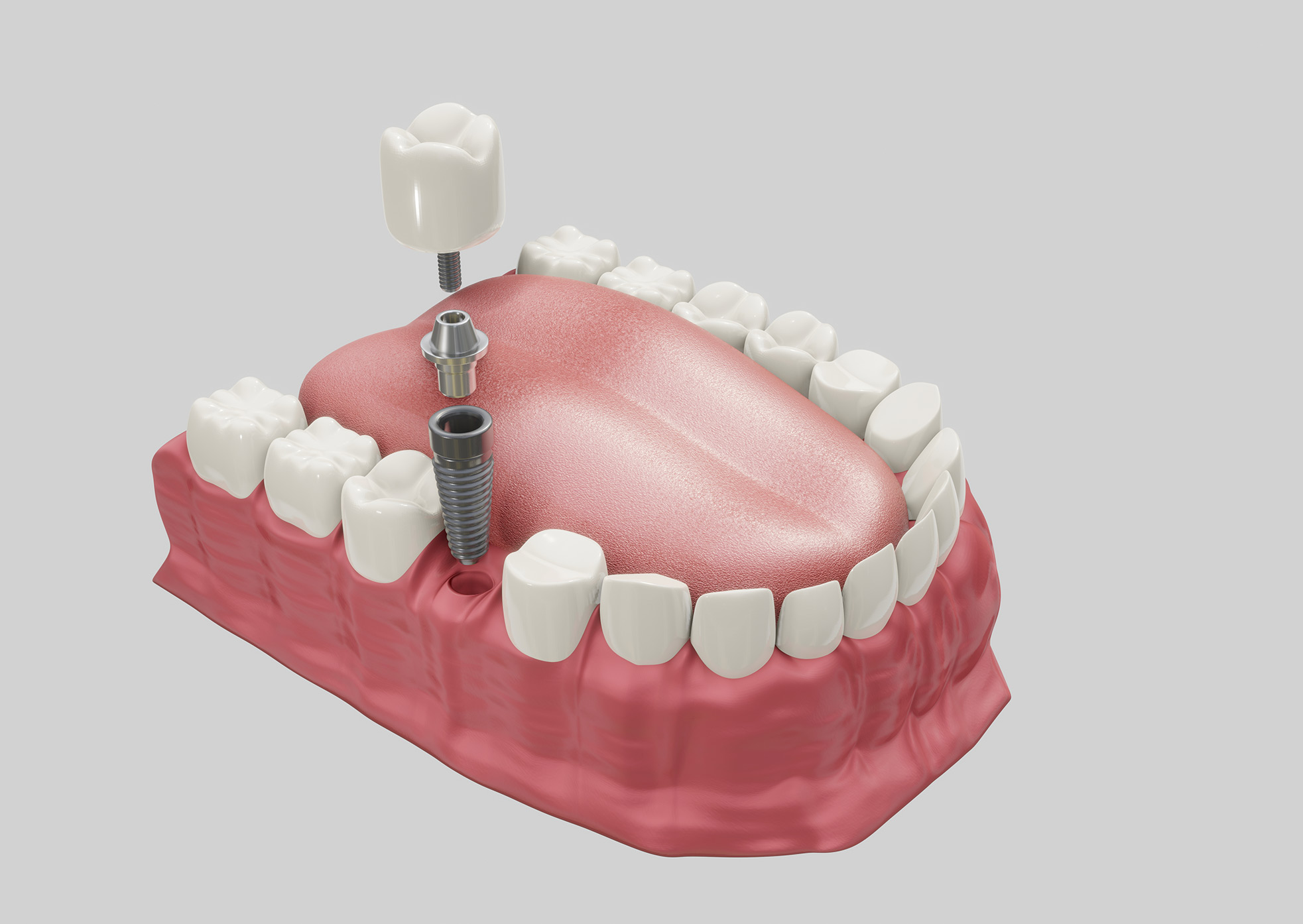Implant
It is possible to restore the function and aesthetics of teeth that have been lost or become dysfunctional in time due to natural or external effects.
The most frequently used technique in recent years is implant application. Implant is a high-tech artificial tooth root that is made of titanium and similar tissue-friendly materials and placed in the jawbone. The dental prosthesis fixed on the implant tooth root placed in the jawbone performs all the functions of a natural tooth. The most important reasons for choosing the implant method in dental treatment are that neighboring teeth are not damaged or cut during the treatment, the quality of the patient’s eating after the treatment and the long life of the implant.
Implants can be applied to anyone over the age of 18 with fully developed bones, face and jaw. In the examination performed by the specialist before the treatment, the patient is informed using visual materials what implant and prosthesis will be applied. If the patient is suitable for treatment and the recommended treatment is approved, treatment is started.
Although the implant does not have any known damage to the body, the allergic sensitivities of some patients may interfere with treatment. This situation is carefully checked by the specialist before starting treatment.

Stages of Implant Treatment
• Implant application is initiated after a preliminary examination is made, the doctor approves the implant treatment and the patient approves the treatment.
• The mouth area of the patient being treated in a private practice or hospital is first anesthetized with local anesthesia.
• Considering the previously taken x-ray and tomography images, appropriate implant slots are opened in the patient’s jawbone.
• Implants are placed in the opened slots.
• It is very important that the implants placed are in accordance with the jawbone.
• If single-stage implant treatment is being applied, a temporary head is placed on the implant.
• In cases where two-stage treatments are applied, the gums are closed on the implant after the implant is placed.
• Permanent prostheses are placed after 2-6 day healing process. In some cases, prostheses can be placed immediately.
• During the healing process, the patient should be very careful, consume hard and solid foods carefully, and take into account heat and cold sensitivity.
• If single-stage implant treatment is being applied, a temporary head is placed on the implant.
• In cases where two-stage treatments are applied, the gums are closed on the implant after the implant is placed.
• Permanent prostheses are placed after 2-6 day healing process. In some cases, prostheses can be placed immediately.
• During the healing process, the patient should be very careful, consume hard and solid foods carefully, and take into account heat and cold sensitivity.

Smile Aesthetics
Communication with other people is very important in our social and professional lives. Smile aesthetics is one of the most important elements of this communication. In the application of smile aesthetics performed by specialist physicians, applications such as removing discoloration of the teeth, repairing cracks and fractures in the teeth, ensuring proper closure of the mouth, giving the gums a healthy appearance are performed. As a result of the applications made by considering factors such as the structure of the face, skin, lip color and structure, the patient’s self-confidence increases and he becomes more successful in his social and professional life.
In the application of smile aesthetics, several applications can be made in line with the demands of the patient. The applications to be made for an aesthetic and ideal smile are explained to the patient by the specialist physician and the treatment process is started upon mutual approval.
Smile aesthetics must be done in facilities that have experts in their field and have sufficient surgical facilities.
Smile aesthetics can be applied to all patients who have completed their psychological and physical development. The application and recovery process depends on factors such as the type of operation to be performed, the age and gender of the patient. Information about treatment and recovery time is reported to the patient by the doctor before starting treatment.


 Turkish
Turkish Deutsch
Deutsch